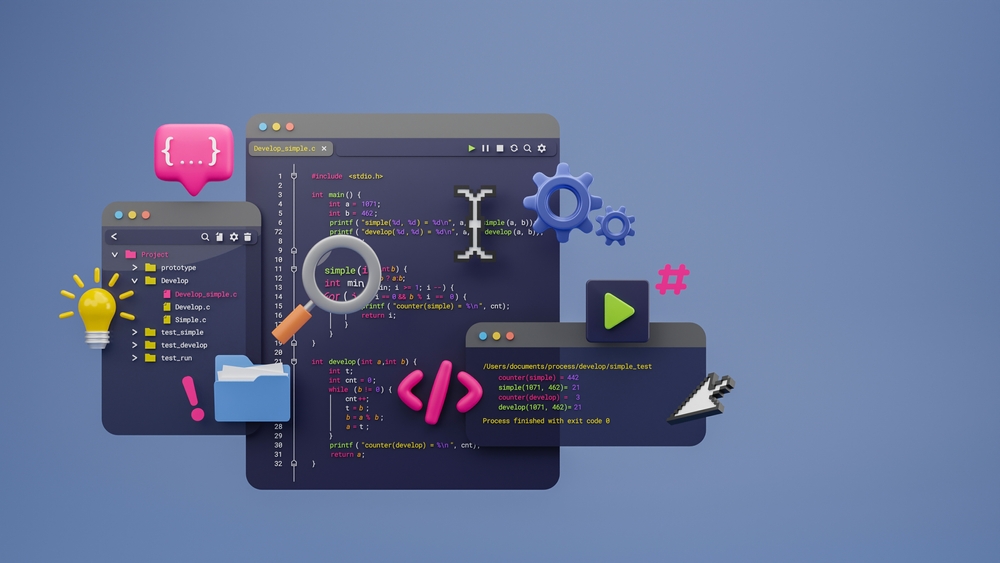Demystifying Infrastructure as Code: Guide to DevOps Automation
The software development and operations field has seen the concepts of DevOps and Infrastructure as Code gain significant popularity over recent years.
They are two closely related concepts and are widely recognized for their benefits to the software development cycle. IaC, or Infrastructure as Code, refers to the process through which infrastructure resources are managed and provisioned, such as networks, servers, and storage, by using machine-readable definition files instead of manual processes.
While relying on this process, organizations are able to automate nowadays and standardize how their infrastructure is deployed, configured and organized.
DevOps, on the other hand, combines several practices and a cultural movement to increase communication, collaboration and automation levels between the teams involved in development (Dev) and operations (Ops). It places an emphasis on delivering high-quality software at a much faster pace.
In many ways, in DevOps, Infrastructure as Code enables DevOps by providing a means to automate the provisioning and management of infrastructure – which, in turn, is essential for DevOps scalability, continuous integration, and delivery (CI/CD), and rapid deployment practices.
Advantages of DevOps Infrastructure as Code in Automation:
Automation through DevOps Infrastructure as Code offers a number of advantages for software development. By treating infrastructure as software, organizations are able to achieve faster, more reliable and highly scalable deployments in their fields. For instance, here are some key advantages of using IaC in DevOps automation:
1. Consistent and Reproducible:
With the use of IaC, infrastructure is treated and managed as code during operations. This ensures that the deployments by the organization are consistent and reproducible across several different environments.
Automation through DevOps infrastructure as code also reduces any inconsistencies between production, development and testing environments – reducing the risk of encountering unexpected behavior during deployments.
2. Saves Time and Effort:
Rapid provisioning and deployment of infrastructure resources is another vital feature that’s enabled by DevOps infrastructure as code. The manual processes that would otherwise consume a lot of time in development get eliminated by automation, reducing the overall time required for infrastructure to be set up and then maintained.
Using DevOps infrastructure as code tools saves both time and effort for the teams involved, who can focus on other operations instead of resource planning.
3. Collaboration and Version Control:
DevOps IaC services rely on version control systems like Git to manage infrastructure code. This allows for any changes made during the development phase to be recorded accurately and supports effective code reviews.
It encourages a collaborative approach to how infrastructure is managed among team members, with added access to easy rollbacks and the chance to implement automated checks and validations.
Overall, the advantages of infrastructure as code allow for numerous improvements to DevOps infrastructure as code practices, making organizations more consistent and efficient.
Collaboration becomes more seamless with IaC fostering a shared responsibility for infrastructure and operations – providing a communication route for teams involved in the software delivery process.
Automation Tools Powering DevOps Infrastructure as Code for Agile Development:
Usually, the DevOps consulting services or team handling DevOps automation consists of several specialized roles in DevOps infrastructure as code. Some of the common categories into which a team handling the automation can be divided include:
- DevOps Engineers
- Infrastructure Automation Specialists
- Release and Deployment Specialists
- Configuration Management Experts
- Monitoring and Logging Specialists
- Security Automation Experts
- QA Automation Specialists
Now the exact roles and responsibilities within the team or organization may vary, depending on the team structure and automation work being undertaken.
Some may also have overlapping responsibilities and skills. But they will each contribute to the overall efforts in automating DevOps practices through their roles and functions. Here’s an overview of the tools and software used by each category, as mentioned above, for DevOps automation:
1. DevOps Engineers – Jenkins:
Responsible for enabling continuous integration and delivery, Jenkins is an open-source automation server that is widely used in software development. DevOps engineers leverage Jenkins to create and manage CI/CD pipelines and automate the processes involved in building, testing, and organizing deployments.
Jenkins is available with a wide range of plugins that integrate with various other tools in the ecosystem, making it flexible and highly customizable.
2. Infrastructure Automation Specialists – Terraform:
Another popular DevOps infrastructure as code (IaC) tool used in the development processes is Terraform. Made by HashiCorp, it enables infrastructure automation specialists to define, provision, and also manage the infrastructure resources required across different platforms and cloud providers.
Related post: DevOps in the Cloud: Leveraging Cloud Services for Agile Development
Terraform consists of a declarative syntax, and this allows its users to create infrastructure templates that can be versioned, shared, and automated.
3. Release and Deployment Specialists – Kubernetes:
Kubernetes is an open-source container orchestration platform. It simplifies how containerized applications are managed and deployed in DevOps infrastructure as code.
Kubernetes is used by release and deployment specialists to manage applications, scale better, and automate their deployment across clusters. In addition to all that, the platform also consists of features such as declarative configuration, rolling updates, and auto-scaling.
4. Configuration Management Experts – Ansible:
Ansible is a powerful automation tool that is used in DevOps infrastructure as code processes by configuration management experts. It simplifies infrastructure orchestration, managing configurations, and how applications are deployed.
The experts use Ansible’s agentless architecture and declarative language to enforce the desired states across systems. Plus, it’s also necessary for managing multi-tier application environments and automating repetitive tasks in development practices.
5. Monitoring and Logging Specialists – Prometheus:
Prometheus is widely used for DevOps monitoring and observability in software development and operations. It is an open-source monitoring and alerting toolkit and gets utilized by specialists in collecting metrics from various applications or systems and then storing them.
In DevOps infrastructure as code, overall, it provides powerful querying, alerting and visualization capabilities so that incidents can be detected through faster monitoring and response.
6. Security Automation Experts – OWASP ZAP:
Another open-source tool, OWASP ZAP (Zed Attack Proxy), is used in DevOps infrastructure as code operations as a security testing tool. Security automation experts use it to automate security scans, identify any vulnerabilities that may be present and perform penetration testing.
OWASP ZAP integrates security testing into the automation pipelines, allowing experts to identify and solve security issues proactively.
7. QA Automation Specialists – Selenium:
What is infrastructure as code without Quality Assurance? Selenium is a widely used automation framework that enables web application testing. QA automation specialists use this open-source framework to perform functional testing of web applications in development.
Selenium also offers support for several programming languages and other tools and libraries, allowing specialists to automate tests and browser interactions.
The landscape for DevOps automation tools is vast, and these tools, as described above, represent just a tiny fraction of the ones in regular use. Depending on the organization’s requirements and the team’s preferences, the choices for specific tools may vary along with the technology stack.
And, in DevOps infrastructure as code, it is vital to evaluate how compatible specific tools and platforms are for the organization’s needs to ensure proper integration and collaboration within the team.






